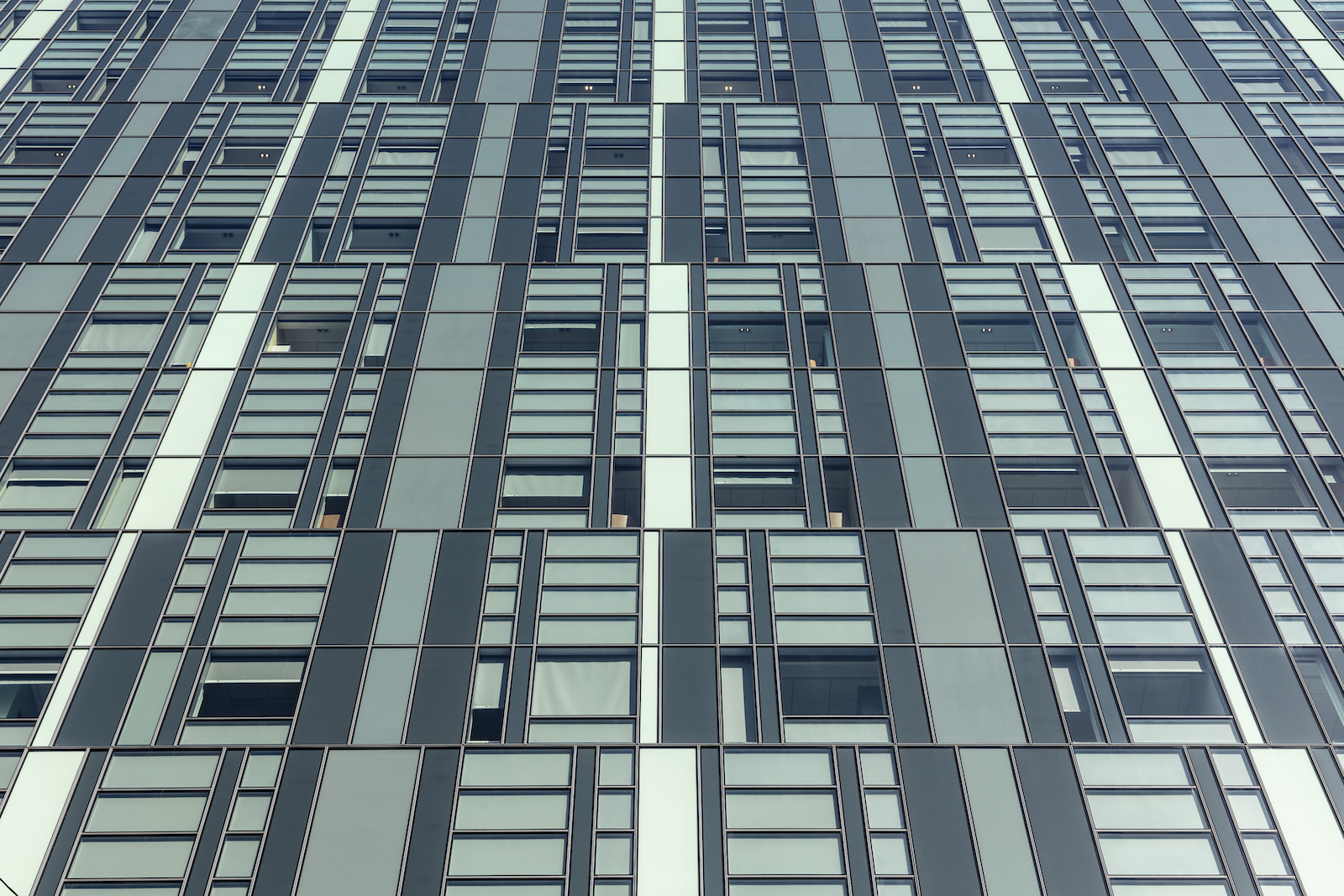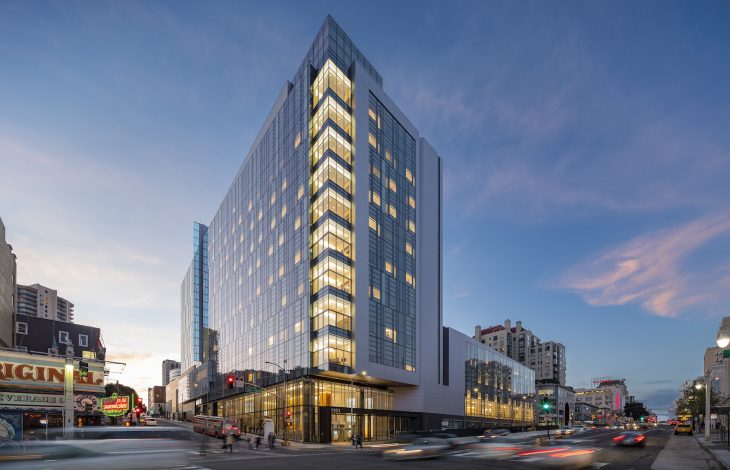Sutter Health California Pacific Medical Center (CPMC) opened its Van Ness Campus Hospital in downtown San Francisco, California. The $2.1 billion hospital, which features aluminum curtain wall, was designed to be a new hub for Sutter CPMC services citywide. Based on a strategic master plan developed by design firm SmithGroup, the flagship hospital brings adult acute care and women’s and children’s care together into one state-of-the-art facility.
“The new Van Ness Campus hospital embodies what the urban hospital of the future should be,” says Heather Chung, strategic medical planner for the project and a vice president at SmithGroup. “As the flagship facility for CPMC, it serves as the beacon for health in the city and exemplifies Sutter’s goal of connecting and integrating healthcare with the community.”
SmithGroup led the planning and design of the new hospital out of its San Francisco office, delivering the project in collaboration with contractor HerreroBOLDT and 16 other risk-reward partners, including Ted Jacob Engineering Group as mechanical engineer and Degenkolb Engineers as structural engineer. Among the largest IPD hospital projects completed in the U.S., the cohesive design and construction approach resulted in numerous successes including delivering the project on time and $150 million under the original project budget.
The new 12-story hospital enhances the urban fabric with a contemporary glass, extruded aluminum, and stone tower meant to reflect the high-rise commercial and residential buildings of the city’s nearby Financial District. The building also incorporates aluminum panels as exterior cladding and a Ombrae decoratively punched aluminum composite panels from Keith Panel System were installed as artwork on the drive through. In addition, aluminum glazed entrance doors were used on the micro-retail spaces located on Van Ness Avenue.

“Because it is a monumental building occupying an entire city block, we sought design solutions that respond to the scale and texture of its downtown San Francisco context,” explains Kent Hetherwick, project manager for the Van Ness Campus hospital and a principal at SmithGroup. “The tower has slightly convex geometry to visually reduce its bulk, kinked slightly outward mid-block. A dichroic fin articulates the kink on either side of the tower and adds colorful flair to the distinctive pattern of the glass curtainwall.”
Since California regulations require that all hospitals must be capable of remaining operational after an earthquake by 2030, the Van Ness Campus uses two novel approaches to strengthen the structure against seismic vibration. First 120 viscous wall dampers are placed around the perimeter of the building’s floorplates to absorb vibration — the first time this technology has been used in a hospital in North America. Second, a four-sided structural silicone sealant is used on the glass curtainwall system, which provides a higher-performance façade in a seismic event.
The new hospital is also designed to use 14% less energy than an average hospital of its size and is targeting LEED Silver certification from the United States Green Building Council (USGBC). All of patient rooms receive direct natural daylight, and energy-efficient LED lighting is used where artificial light is needed.

